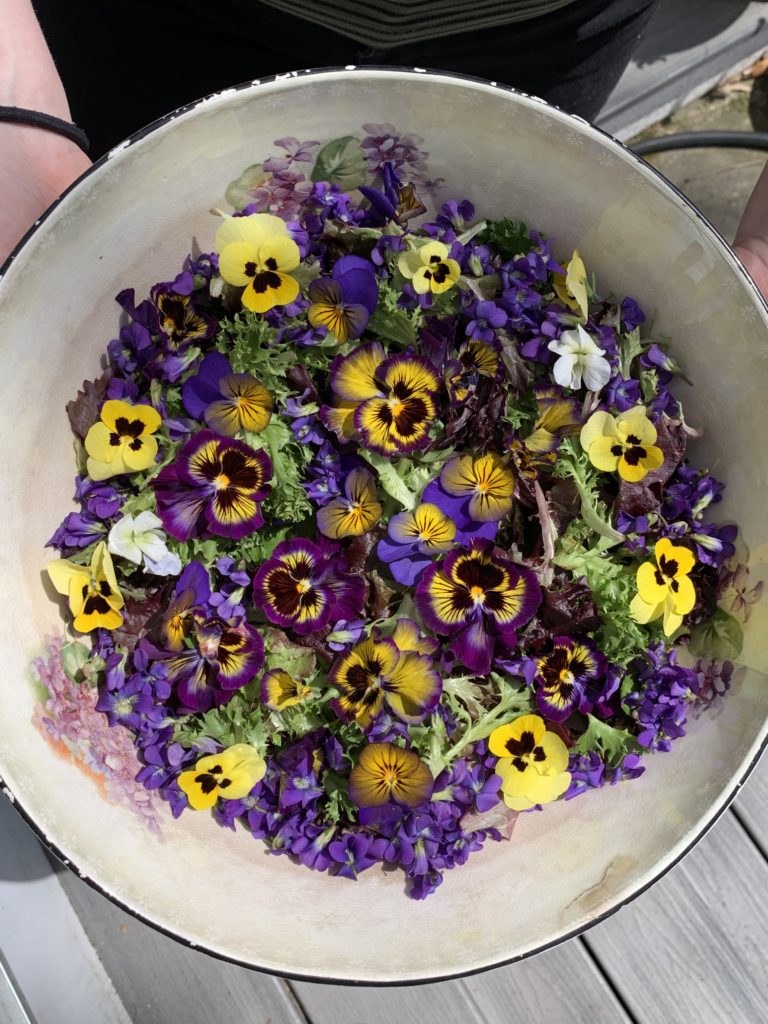Gardening for Health

The Tasty and Colorful Violet
By Maria Price
Some of the first seasonal flowers to appear in spring are in the genus Viola, which contains hundreds of species. There is nothing more delightful than a garden path lined with purple violets after a long winter.
Pansies, violas and violets brighten up our early spring gardens with no fear of cold weather thwarting their growth. Dr. Art Tucker and Susan Belsinger, authors of The Culinary Herbal, say the colorful little blooms are safe to eat. “These common European wildflowers are traditionally used to garnish the May wine punch bowl and other beverages, desserts, sandwiches and salads. They are used in making jellies, syrups, butters and fancy desserts,” they write. While the foliage of wild violets is edible, the leaves of johnnies and pansies are typically not eaten.
The International Herb Association has named violets the 2022 Herb of the Year.
The Viola tricolor, commonly known as Johnny Jump-Up, is also known as wild pansy. “Violet most often refers to the wild purple-blue violets and white-flowering wood violets, sometimes called confederate violets, birdfoot violets and sweet violets. Wild violet leaves are usually heart-shaped, except for the birdfoot, whose leaves look like what its name suggests,” write Tucker and Belsinger.
Wild violets have a mild scent and taste, whereas sweet violets, viola, odorata, pansies and violets have a sweeter perfume and taste more flowery. They can be used in beverages, syrups, cordials, pastilles, ice creams and confections.
Violet flowers and leaves contain a good amount of vitamins A and C. Viola may cause nausea and act as a mild laxative if eaten in large amounts because of its saponin content.
Viola species grow best in a woodland environment. They favor shade but grow well in a sunny, herbaceous border with proper moisture and organic matter. Pansies come in many colors with bright, happy faces and require more sun to bloom well.
Fritillary butterflies eat violets, which can make a lovely ground cover for your butterfly garden. The meadow fritillary, Diana fritillary, great spangled fritillary and the variegated fritillary all like to eat violets in their caterpillar form.
Violets and pansies contain a generous amount of a flavonoid compound called rutin, which helps maintain the strength and integrity of capillary walls. Rutin can be used to strengthen capillaries and reduce ocular pressure in glaucoma. Dr. Jim Duke, author of the Green Pharmacy, writes that a few tablespoons of violas will give you about 100 milligrams of rutin.
Make a spring salad with a few pansies and violets to make your dinner guests smile and eat their greens happily.
